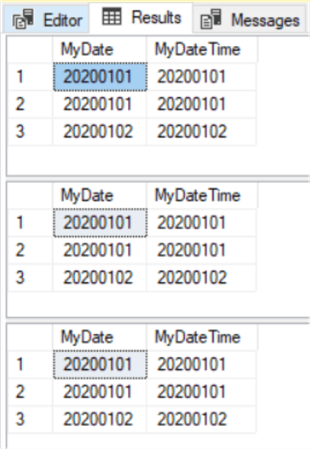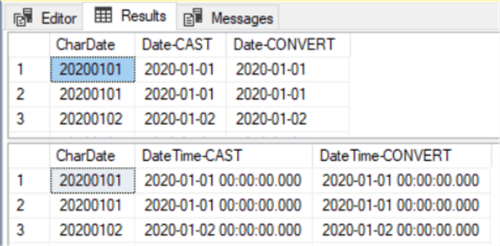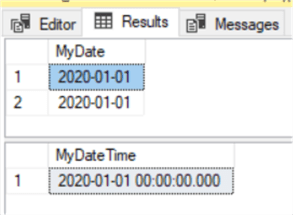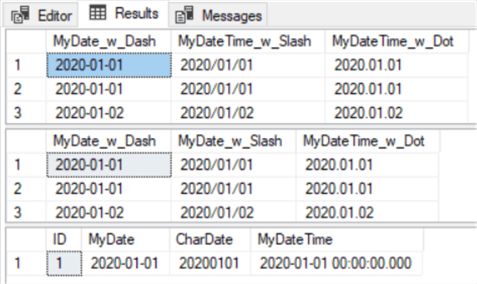Using keyboard shortcuts can greatly increase your productivity, reduce repetitive strain, and help keep you focused. For example, to copy text, you can highlight text and press the Ctrl+C shortcut. The shortcut is faster than moving your hands from the keyboard, highlighting with the mouse, right-clicking, selecting copy, and returning to the keyboard.
Below are the top 10 keyboard shortcuts we recommend everyone memorize and use.
Ctrl+C or Ctrl+Insert and Ctrl+X
Both Ctrl+C and Ctrl+Insert will copy highlighted text or a selected item. If you want to cut an item instead of copying it, press Ctrl+X. This action removes the text or item and stores it in the clipboard, rather than copying it to the clipboard.
Apple computer users can substitute the Ctrl key for the Command on their computers. For example, pressing Command+C copies highlighted text.
Ctrl+V or Shift+Insert
Both the Ctrl+V and Shift+Insert will paste the text or object that's stored in the clipboard.
On Apple computers, use Command+V instead.
Practice
Use the above text input fields to highlight the "Cut or copy this text" text and press either Ctrl+C to copy or Ctrl+X to cut the text. Once cut, move to the next field and press Ctrl+V or Shift+Insert to paste the text.
Ctrl+Z and Ctrl+Y
Pressing Ctrl+Z will undo any change. For example, if you cut text, pressing this key combination will undo the cut. These shortcuts can also be pressed multiple times to undo or redo multiple changes. Pressing Ctrl+Y would redo the undo.
On Apple computers, use Command+Z and Command+Y to undo and redo.
Use the above text input field to highlight some or all the text and then press Ctrl+X to cut the text. Once the text has disappeared, press the Ctrl+Z to undo the cut.
If you did the first example as well (cut and paste text) and you continue to press Ctrl+Z, it will undo that change.
Ctrl+F and Ctrl+G
Pressing Ctrl+F opens the Find field, which allows you to search the text currently displayed in any program that supports it. For example, Ctrl+F can be used in your Internet browser to find text on the current page. Press Ctrl+F now to open the Find in your browser and search for "shortcut" to display each time shortcut is mentioned on this page.
On Apple computers, use Command+F to find.
Ctrl+G may be used to repeat a search (from using Ctrl+F) in a document or on a web page.
Alt+Tab or Ctrl+Tab
Pressing Alt+Tab switches between open programs moving forward. For example, if you have your browser window open and other programs running in the background, press and hold Alt, then press the Tab key to cycle through each open program.
On Apple computers, instead of using the Alt key use the Command (Cmd) key. For example, Command+Tab to switch between open programs.
Press Ctrl+Tab to switch between tabs in a program. For example, if you have multiple tabs open in your Internet browser, press Ctrl+Tab to switch between them.
Adding the Shift key to Alt+Tab or Ctrl+Tab moves backward. For example, if you are pressing Alt+Tab and pass the program you want to use, press Alt+Shift+Tab to move back to that program.
Windows Vista, 7, 8, and 10 users can also press the Windows key+Tab to switch through open programs in a full screenshot of the window.
Ctrl+Backspace and Ctrl+Left or Right arrow
The following shortcuts are for PC users only and do not work on Apple computers.
Pressing Ctrl+Backspace deletes a full word at a time instead of a single character.
Holding down the Ctrl while pressing the left or right arrow moves the cursor one word at a time instead of one character at a time. If you want to highlight one word at a time, hold down Ctrl+Shift, then press the left or right arrow key. Your highlighted selection moves one word at a time in that direction.
Ctrl+S
While working on a document or another file in almost every program, pressing Ctrl+S saves that file. Use this shortcut key frequently when working on anything important in case of an error, lost power, or any other issues causing you to lose work since the last save.
On Apple computers, use Command+S to save a file.
Ctrl+Home or Ctrl+End
Ctrl+Home moves the cursor to the beginning of the document, and Ctrl+End moves the cursor to the end of a document. These shortcuts work with most documents, and web pages.
On Apple computers, use the Command+Up arrow to get to the beginning or Command+Down arrow to get to the end of a document or text.
Ctrl+P
Ctrl+P is used to open a print preview of the page or document currently being viewed. For example, press Ctrl+P now to view a print preview of this page.
On Apple computers, use Command+P to open the print preview.
Page Up, Spacebar, and Page Down
As you may have guessed, pressing either the Pg Up or Pg Dn key moves to the next or previous page. When browsing the Internet, pressing the spacebar moves the scrollbar down a page. Similarly, Shift+spacebar moves the scrollbar up one page.





